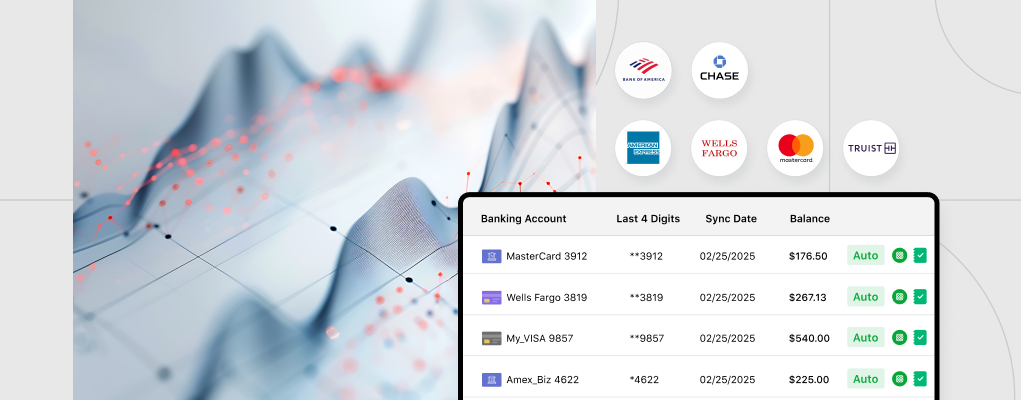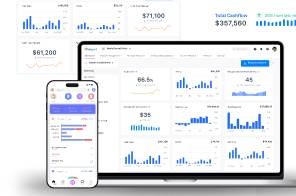The 13-week cash flow forecast has always been an indispensable tool for CFOs, controllers, and business owners.
It is a simple, tactical, and surprisingly powerful tool that helps businesses anticipate liquidity gaps, optimize working capital, and reassure boards and lenders – when modelled right.
But the forecasts are only as reliable as the data that feeds them:
On paper, rolling forecasts appear rock-solid. But they have a weakness: they’re only as reliable as the data that feeds them.
Most businesses still update them manually, often every week, from spreadsheets or ERP reports. And in companies where money moves fast, this lag means the model starts drifting away from reality almost as soon as it’s published.
Stale numbers make bad forecasts & cause real problems:
Let us assume that a significant supplier’s payment clears earlier than planned. The bank account will shrink today, but the forecast may still indicate that the cash is still available until next week. Nobody notices it. And by the time someone does, the account is red, and the treasury is calling the bank for an emergency loan.
Or, say, a customer who has always paid on time suddenly doesn’t. The forecast assumes the money is in, so leadership signs off on a shiny new CapEx project. The days drag by, no payment arrives, and the “available cash” evaporates into thin air.
The above problems aren’t just a matter of bad luck. They happen when forecasts rely on data that is not aligned with immediate reality.
And the problems stealthily show up in different guises when you least expect them:
- Payments sneak through early: Accounts dip before the model knows it, and the overdraft fees follow.
- Receivables get stuck: Because the cash looks healthier than it really is, the business may spend money it doesn’t really have.
- Intercompany transfers vanish: Manual updates miss them, inflating liquidity that doesn’t actually exist in the first place.
- Debt repayments cut close: A repayment is due, but balances lag. Suddenly, the team is scrambling at the last minute to sort it out.
- Reports lose credibility: By the time the forecast hits the board deck, it’s already out of date.
Solving the Rolling Forecast Problem with Docyt’s Real-Time Feeds:
Imagine the forecast pulling live data straight from your banks, accounting system, and operations. Payments clear, and the model updates instantly.
That customer check is late; the forecast shows the gap right away. When a sudden surplus lands, it’s visible the same day, not buried in next week’s reconciliation.
And that’s only the beginning. With rolling forecasts powered by real-time data feeds, you:
- Spot cash dips immediately so you don’t overlook the overdraft penalties.
- Identify late payments the day they slip, giving leadership time to adjust spending.
- Catch hold of the surplus balances instantly. So idle money can earn interest or pay down debt.
- Keep intercompany flows accurate, removing phantom liquidity and double-counts.
- Protect debt repayments, since balances always reflect what’s really there.
- Build trust in reporting, because leadership sees the most relevant data possible.
Real-time rolling forecasts can deliver all of the above (and more), but only if the data underneath them stays live and accurate.
However, getting here takes a whole lot more than a spreadsheet refresh. It takes a real-time AI accounting engine to pull, clean, and sync data the moment money moves, providing the most accurate and intelligent rolling forecasts possible, like Docyt.
Real-time Rolling Forecasts & How Docyt Makes Them Possible:
Docyt keeps the 13-week forecast tied to real cash by automatically pulling and cleaning data straight from the source. Here’s how:
Live financial feeds: Bank and credit card activity streams in real-time as they post. Core systems, such as PMS, POS, payroll, and accounting, push their data directly to, so the forecast isn’t waiting on exports or weekly reports.
Smart reconciliation and categorization: Every transaction is matched against bills, invoices, and receipts. AI eliminates duplicates, corrects misclassifications, and automatically assigns items to the correct accounts and cash flow buckets.
Accurate group-level visibility: Intercompany transfers are mapped correctly, while balances across banks and entities are pulled together in one view. That means no phantom liquidity and no chasing down scattered reports.
Continuous roll-forward & clear audit trail: With Docyt’s real-time feeds, the forecast moves as the business moves, and every change can be traced back to the source for clear audit trail.
A supplier payment that arrives early, a receivable that slips, or a loan repayment comes due – the forecast adjusts in real-time. And every number is linked back to the actual transaction and document which further makes the changes in the forecast are easy to trace and explain.
All the above pieces (and there are more) don’t exist in silos; they happen in sync. Banks, cards, payroll, operations – everything feeds into one pipeline that updates the forecast without anyone lifting a finger. The data remains live, the model continues to evolve, and leaders make decisions based on what’s truly there, not what the spreadsheet reported last week.
Powering them with the real-time data feed, Docyt turns your rolling forecasts into a live strategic tool that shows where cash stands, where it’s heading, what trouble to expect, and gives leadership steady control over liquidity and decisions that depend on it.
And Docyt achieves this without heavy setup, integration, or costly rebuilds.
Every business can now elevate their forecasts into a live cash intelligence tool that makes cash positions and liquidity planning precise – all with a simple add-on like Docyt.
Check out our live demo to know how.


